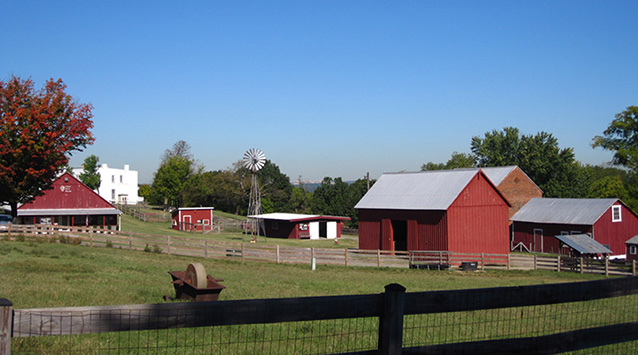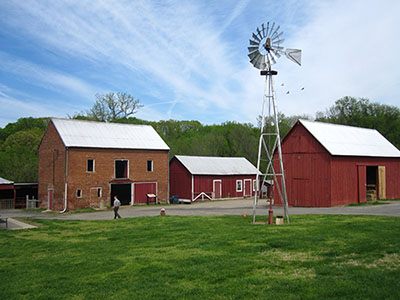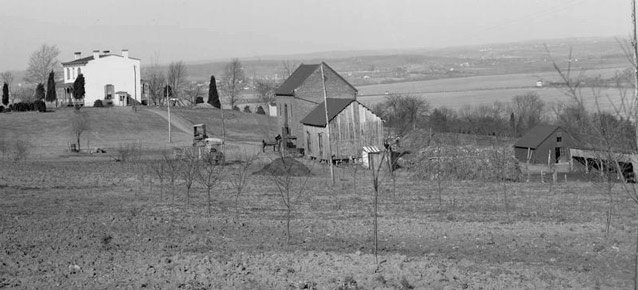Oxon Hill Farm is a 289-acre cultural landscape within Oxon Cove Park, part of National Capital Parks-East. Although the park is only about eight miles south of the United States Capitol, it retains much of its historic agrarian character. It is also associated with this history of St. Elizabeths Hospital, the first federally operated mental health facility.
"Outdoor life continues to be a prominent feature in the treatment here...the result is certainly an improvement in their bodily health and not infrequently in their mental condition." Doctor William Godding in his 1884 Annual Report of the Government Hospital for the Insane (in NPS Oxon Cove Park Cultural Landscape Inventory report)

NPS
The Oxon Hill Farm cultural landscape is associated with the agricultural history of Prince George’s County, Maryland during the eighteenth and nineteenth centuries. The landscape is associated with with Tidewater tobacco culture of the 1700s, when tobacco became the primary export of the country. It was used as currency in land, court, and business transactions. In later years, the historic vegetation at Oxon Hill Farm included agricultural crops, fruit trees, ornamental plantings, and woodlands. The farm was cultivated by its owners or tenant farmers until its acquisition by the federal government at the end of the nineteenth century.
Oxon Hill Farm is also historically significant for its association with St. Elizabeths Hospital, originally known as the Government Hospital for the Insane (GHI). The hospital was founded in 1852, during a period of mental health reform that led to the creation of numerous public asylums throughout the country.

NPS
St. Elizabeths was the nation’s first federally operated mental health facility. The hospital acquired the farm in 1891 while under the leadership of Doctor William Whitney Godding and intended for it to provide therapy for patients in the form of labor in the fields and gardens. Patients helped maintain the piggery, orchard, and poultry operations at the facility. Outdoor life, labor, and the views of the Potomac River were all features of the treatment and care that Doctor Godding adopted at the GHI.
Doctor Godding envisioned the farm, known during this period as Godding Croft, growing into a “colony” where patients lived and worked. He thought “such colonies may in time be multiplied and extended, growing into villages for the harmless insane.” Though the farm never materialized into the colony Godding hoped for, patients lived at the hospital and continued the farm operation until the mid-1960s. While the labor was believed to be a beneficial element of care, it also served practical purposes for the needs of the hospital.

National Archives and Records Administration (RG 418, G-127)
Oxon Hill Farm was listed on the National Register on September 2, 2003. The farm is historically significant in the areas of health, medicine, and agriculture during the periods 1791-1890 and 1891-1967. The period begins with the documentation of the ownership and development of the land that would become Oxon Hill Farm and ends when the site becomes a unit of the National Park Service in 1967.
Today, Oxon Hill Farm retains much of its nineteenth, and possibly eighteenth, century agrarian landscape character. The majority of the field patterns, orchards, ornamental plantings and circulation system date to the period of significance and reflect land usage and spatial organization of that era. Interpretive programs provide visitors with a view of the site’s agricultural history. Although the fields lie fallow, crops are still cultivated in gardens near the farm’s center, and one of the remaining orchards has been replanted. Many of the farm’s buildings and structures also date to the period of significance and are representative of construction methods and building styles of the early to late nineteenth century.
Quick Facts
- Cultural Landscape Type: Vernacular
- National Register Significance Level: National
- National Register Significance Criteria: A, C
- Period of Significance: 1781-1967
Landscape Links
Last updated: October 8, 2021
